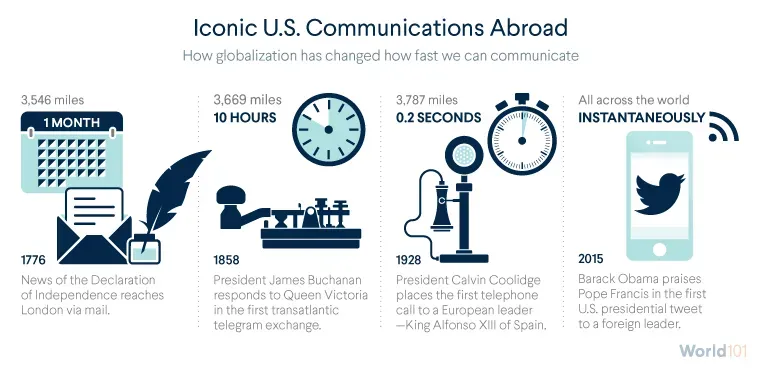Two Hundred Years of Global Communications
From the printing press to Instagram, technological advances shape how people communicate.
Teaching Resources—Globalization: Case Studies (including lesson plan with slides)
Higher Education Discussion Guide
Humans communicate in various ways. They have been writing to each other since the fourth millennium BCE, when one of the earliest writing systems, cuneiform, was developed in Mesopotamia. These days, the internet enables people to send and receive messages instantaneously and internationally; with the rise of social media, people share more—and more quickly—than ever before. This timeline follows nearly two hundred years of innovations in communication that have helped people all over the globe connect.
Technical innovation in the nineteenth century made the era one of rapid and significant change, and laid the groundwork for today’s interconnected world. Railway lines were being laid extensively, as were telegraph lines, which allowed people to send messages across long distances at unprecedented speed. As telegrams grew in popularity, the telephone was not far behind. Meanwhile, improvements to the press made printing news much quicker. The combination of these changes meant that news began to travel much faster during this period: for the first time, news could reach people in hours instead of days or weeks.
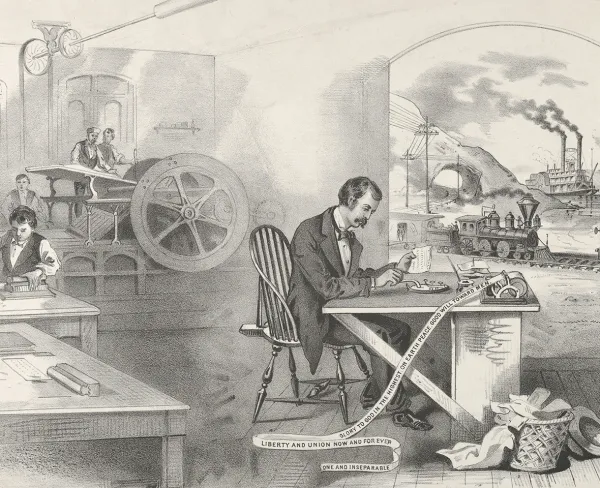
Currier & Ives via the Metropolitan Museum of Art
Currier & Ives via the Metropolitan Museum of Art
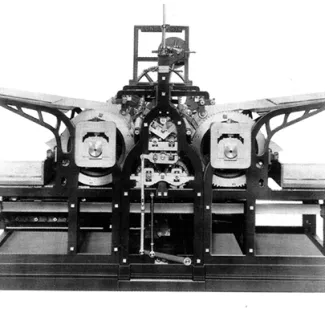
Philip B. Meggs, A History of Graphic Design
Around 1450, Johannes Gutenberg perfected his printing press, which could print 3,600 pages in one day, facilitating access to media; book prices dropped by two-thirds between 1450 and 1500. Printing technology continued to improve throughout the eighteenth and nineteenth centuries. An important milestone was the steam-powered printing press. When the Times of London acquired one in 1814, the speedier technology—it could print at least 1,100 pages in an hour—helped boost circulation tenfold in just a few decades.
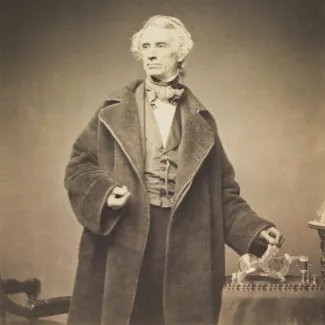
Mathew Brady
Samuel Morse sent the first message from an electrical telegraph in 1844, from Washington, DC, to Baltimore. His message: “What hath God wrought?” Coinciding with the rise of the railroad, the telegraph profoundly changed communications by making it easier and faster to send near-instantaneous messages across long distances. In just six years, twelve thousand miles of cable crisscrossed the United States; by 1861, Western Union had finished work on the first telegraph line that reached the East Coast from the West. In 1929, at its apex, Western Union transmitted more than 200 million telegrams.
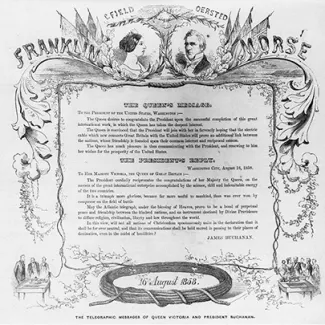
Frank Leslie's Illustrated Newspaper via Library of Congress
Before people relied on nearly 750,000 miles of undersea fiber optic cables to facilitate their internet communication, they used telegraph cables to exchange messages. The first transatlantic telegram was sent fourteen years after Samuel Morse sent the first telegram. In 1858, Queen Victoria sent the first transatlantic telegram to President James Buchanan in just sixteen hours, and Buchanan’s response arrived in ten, as opposed to the twelve days it would have taken via ship and land. The telegraph would continue to be the dominant mode of long-distance communication, used to share both personal news and major world events. When the Titanic sank in 1912, for example, the news was transmitted via telegram.
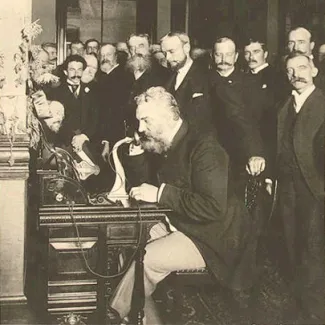
U.S. Library of Congress
As the popularity of the telegram grew, Alexander Graham Bell was working on an even more direct form of communication: the telephone. He was granted a U.S. patent for the device in 1876. Once adopted, the telephone’s popularity grew rapidly: in 1900, there were 600,000 telephones in the United States; by 1910, there were 5.8 million. In 1927—the same year as the first television transmission—the telephone officially went international. That year, the first commercial transatlantic telephone conversation, happened, between Evelyn Murray, secretary to the British General Post Office and W. S. Gifford, president of the American Telephone and Telegraph Company (AT&T), still a leading telecommunications company.
The twentieth century was defined by many great technological achievements, including advancements in mass communications. Radio and television gave a broader audience immediate access to news and entertainment—a significant leap from receiving information by train or telegraph. Later, people could communicate on the go with cellular phones. And satellites—introduced for military purposes—enhanced the global reach of them all.
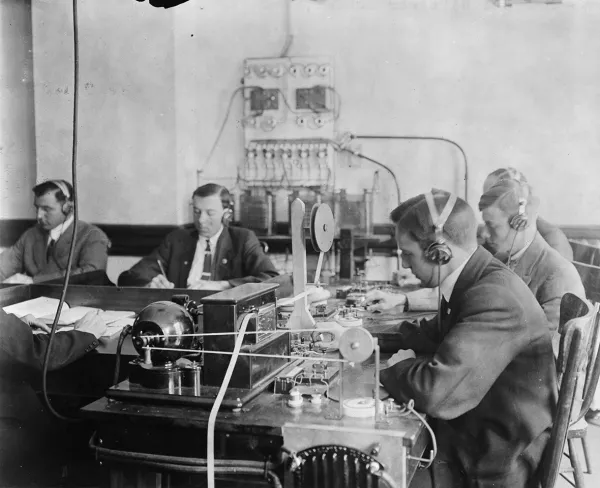
Underwood & Underwood via Library of Congress
Underwood & Underwood via Library of Congress
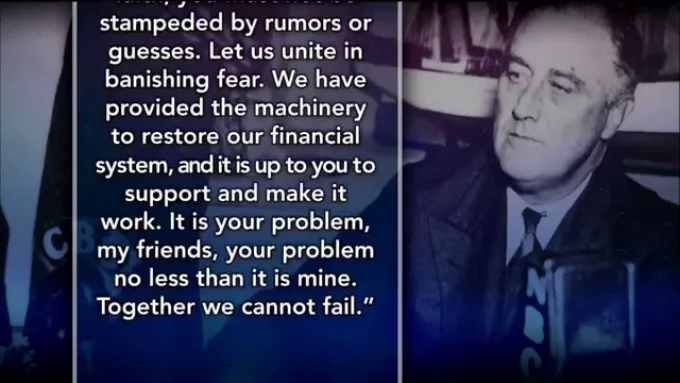
PBS NewsHour via YouTube
Italian inventor Guglielmo Marconi received a U.S. patent for radio technology in 1904, three years after he claimed to have sent the first transatlantic radio signal. Radio was the first technology that could instantaneously communicate to a mass audience. Because it allowed continuous, up-to-date news and entertainment for people regardless of their income or literacy levels, it became immensely popular. In many parts of the world today, radio remains a dominant source of news and entertainment; it is considered to be the most important means of mass communication in Africa, where literacy rates are relatively low and electricity access is inconsistent. In 2010, an estimated 44,000 radio stations operated around the globe.
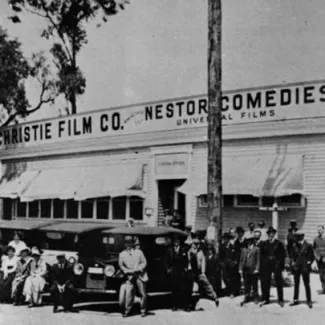
Los Angeles Public Library
Around the same time as the radio, another form of mass entertainment also became widely popular: movies. By 1907, just over a decade after the first motion picture was released in France, two million Americans were going to the movies at nearly eight thousand movie theaters nationwide. Two-thirds of the films being shown at that time were European imports. But soon, World War I destroyed the European film industry. By 1918, 80 percent of movies globally were produced in the United States. Today, despite Hollywood’s enduring status as the commercial center of cinema, the industry is largely global. The top-grossing Hollywood films make the bulk of their revenues abroad. And the top producer of movies these days, in terms of films released per year, is India.
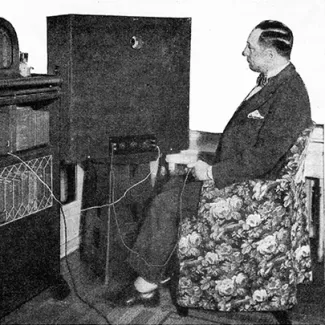
Radio News
The first television broadcast, in 1928, marked the beginning of a new era of mass consumption of news and entertainment. However, television didn’t become popular until after World War II: in 1946, about six thousand TV sets were in use in the United States; by 1960, 90 percent of American homes had a TV. Television programs produced in the United States have global viewership. In 2016, the crime drama NCIS was the most watched television drama globally, with forty-seven million viewers.
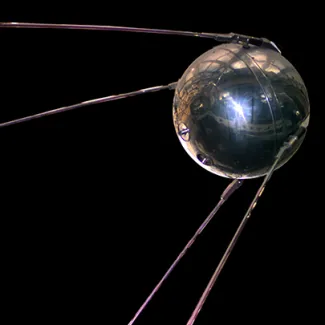
National Aeronautics and Space Administration
In 1957, the Soviet Union launched Sputnik 1, the first artificial satellite. As the United States sought to catch up, and the space race took off, scientific developments pioneered a wide range of uses for satellite technology. Since the launch of the first communications satellite in 1962, satellites have been an integral part of global communications. That year, the first transatlantic broadcast of live television entertained an audience of tens of millions. In North America, viewers saw, among other highlights, the Big Ben, the Louvre, and Sicilian fishermen at work; in Europe, viewers were treated to sights of an American baseball game, the Statue of Liberty, and a press conference by President John F. Kennedy. Today, more than 2,500 satellites orbit the earth to track weather, monitor military movements, give users accurate directions through the Global Positioning System (GPS), and more.
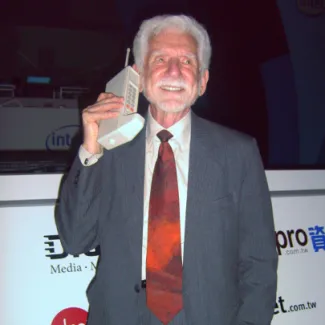
Rico Shen via Wikimedia Commons under GFDL and CC BY-SA 3.0
A century after the telephone’s invention, Motorola placed the world’s first call from a cell phone (to its rival AT&T, of course). Motorola’s cell phone looked nothing like the ones available today: it was big, weighed almost three pounds, and could be used only for about thirty-five minutes. As a research prototype, it also wasn’t publicly available. Motorola’s first cell phone for sale, based on this prototype, could cost up to $4,000, meaning cell phones were even more of a luxury item then than they are today, when 96 percent of Americans own cell phones.
In 1989, British engineer and computer scientist Tim Berners-Lee pioneered the World Wide Web, which paved the way for today’s internet communication. Access to the internet has gone up: in 2000, only 6.5 percent of people globally used the internet; as of 2018, around 51 percent do—thanks in part to technological advancements such as high-speed broadband and smartphones. The internet has given rise to new developments in communication too, including search engines and social media. The internet has become so integral to modern life that in 2016 the United Nations passed a resolution declaring access to the internet a human right.
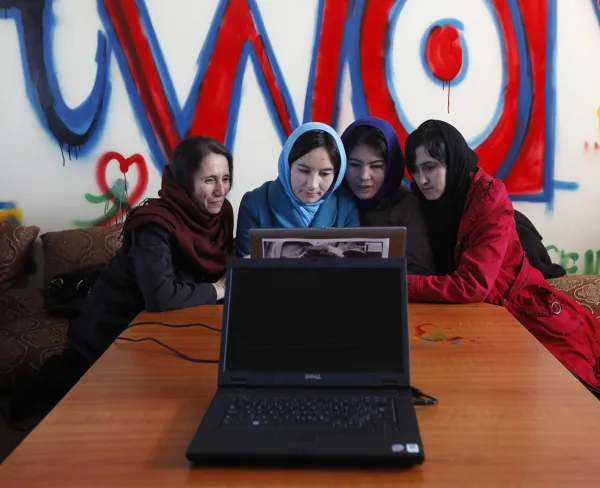
Mohammad Ismail/Reuters
Mohammad Ismail/Reuters
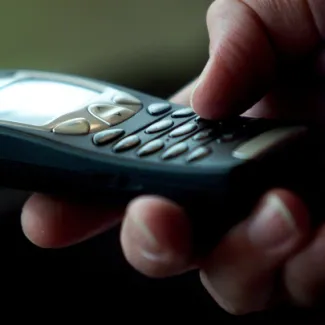
Ferran Paredes/Reuters
Short message service (SMS), the first form of text messaging, debuted in 1992 in the United Kingdom with a “Merry Christmas” from a software developer to a Vodafone employee. In 2000, AT&T began offering text messaging on cell phones in the United States. In 2018, cell phone users in the United States sent each other two trillion texts.
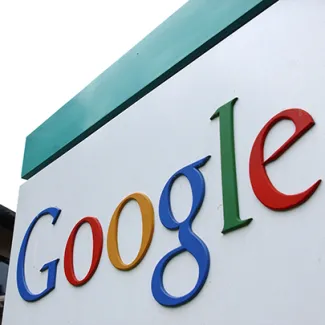
Clay McLachlan/Reuters
Google’s official launch in 1998 altered the digital landscape with its ability to search for and identify information on the internet in less than a second—so much so that “google” eventually became a verb in the English language synonymous with “search.” Over the years, the number of Google searches has consistently increased—in 2016, the company fielded trillions of searches—with many conducted on mobile phones. Google is so ubiquitous, in fact, that when, in 2013, Google’s server crashed for five minutes, total internet traffic decreased by 40 percent. And Google has expanded beyond its search engine. Google-owned products such as Gmail, Google Maps, and YouTube provide communications, navigation, and entertainment services to billions of people.
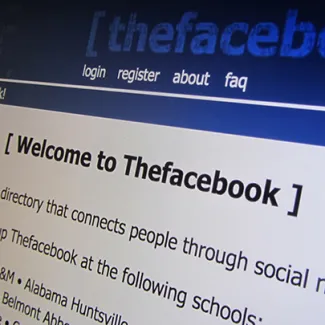
Christiaan Colen via Flickr under CC BY-SA 2.0
The internet gave rise to social media platforms on which people around the world could connect and share ideas, personal updates, and more. Facebook got its start at Harvard University in 2004 and eventually evolved into one of the most influential social media websites. In the years since, many more social media services have emerged, including Twitter, WhatsApp, Instagram, Snapchat, and TikTok, all of which give users a platform to share their stories and connect with each other from anywhere in the world. Social media has definite advantages, but its global interconnectivity and growing influence in public discourse also raise concerns about such issues as free speech, user privacy, and data security.
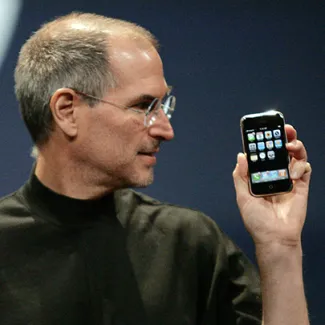
Kimberly White/Reuters
When Apple released the iPhone, the first mainstream smartphone, in 2007, it revolutionized personal communication by marrying the typical functions of a cell phone (calls and texts) with those of a computer (internet access). Smartphone users can share information and communicate with people anywhere in the world on a device that weighs half a pound. Smartphones are so ubiquitous that analysts predict nearly three-in-four internet users will only surf the web on their phones by 2025. But while smartphones are increasingly popular, not everyone has equal access to them. In 2018, 94 percent of South Korean adults reported owning a smartphone, compared to 13 percent of Tanzanians.

Piero Cruciatti/AFP via Getty Images
As billions of people around the world began social distancing to limit the spread of COVID-19, schools, offices, and even orchestra performances moved online. However, not everything could be done remotely; frontline workers faced increased risks of infection conducting essential services in person, and other aspects of life simply shut down. Additionally, as learning moved online, just one in three children and young people could access the internet at home.
